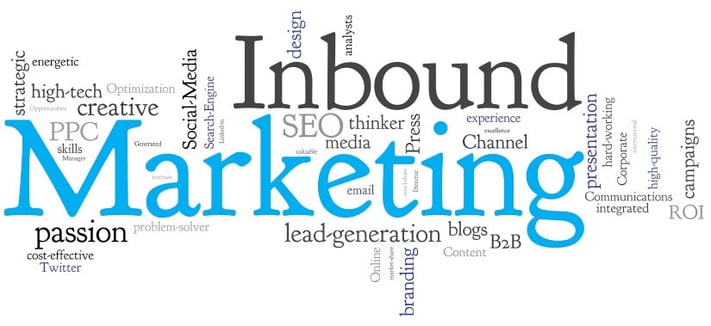Marketing sure has come a long way over the years. Historically, marketing was always considered a very difficult thing to measure. Unfortunately, as a result of this, it was generally the first area cut when a company looked at expenses. With the digital age and the tools that are available now, marketing is now considered a part of the sales process and it is possible to report on the return on investment as a result.

Direct Marketing vs. Inbound Marketing
Let’s start with where we came from. Think back to the day where the primary marketing function was a “direct marketing” model. The primary channels that were available, such as radio and television spots, were next to impossible to measure from a return on investment standpoint. Marketers were able to talk about the overall reach and number of impressions they had, but being able to tie a conversion to one of those deliverables was extremely difficult.
Inbound marketing is based on being found as opposed to going directly to a prospect. A solid inbound marketing strategy focuses on developing strong content that offers value to a prospect as opposed to telling them about you.
Today’s Buying Process
Think about the way consumers buy in today’s world, both in the B2B and B2C space. Their first step is to always identify that they have some type of need or problem. It could be that they recently got into a car wreck and need to purchase a new car, or it could be an IT director identifying they need to upgrade their company’s virtual storage. Regardless, they have a need that they need to solve for.
Their next step is they go and find potential solutions for this need. In today’s world, they typically do their research online as it’s the quickest and most effective method to find what they are looking for. During this consideration stage, consumers are starting their research process through a search engine such as Google. It’s critical for your organization to be found at this point.
The final stage of the buying process is the decision stage, where the the prospect ultimately decides which organization’s product they are going to move forward with to address their need. At this point, it is critical for sales teams to be armed with the correct collateral (i.e. presentations, case studies, etc.) in order to showcase the value of your solution is at pertains to who the prospect is. It is critical to build to collateral based around the persona of who the purchaser is, as it will ultimately need to speak to them and the type of need they have.
How Inbound Marketing Relates to the Buying Process
You may be wondering at this point what the heck the consumer buying process has to do with inbound marketing at this point. The quick answer is: everything. The inbound marketing methodology we follow at Presh Marketing Solutions is based on a four step process: Attract, Convert, Close, then Delight. This process goes hand in hand with the consumer buying process.
When a consumer identifies they have a need, it is critical that you have a website designed correctly and are able be found in order to attract them. When a consumer is in the consideration stage and researching their options, you must have the right collateral (such as eBooks) available to help aide this process in order to convert them from a visitor to a prospect. When the prospect is in the decision stage, it is critical that your team has the right material in place in order to close them from a prospect to a customer.
The final stage is outside of the buying process, and is focused around delighting them with good post-sales engagement and customer support. Here it is critical to keep them engaged through newsletters and other material, as they are now engaging with other potential customers through digital conversations (think business review sites such as Yelp) in regards to your product.
Focus on the VALUE You Bring Instead of Selling
Let’s take it back to the beginning where marketing was a one-way conversation. Marketers told the consumer what they wanted to tell them through direct marketing. Now marketers MUST add value and let consumers find them through inbound marketing methods.
Consumers now have more information and choices than ever before, so the last thing that they want is to be sold to. They want to make an informed decision, and are willing to do the research in order to do so. As a marketer, it is critical to make sure you are adding value in order to be found and to be a part of the consideration process.